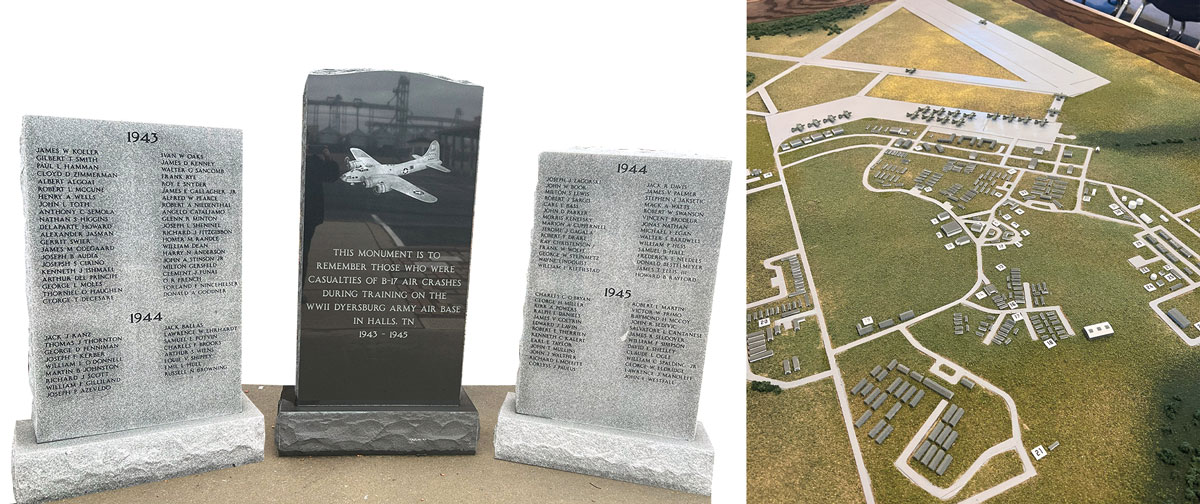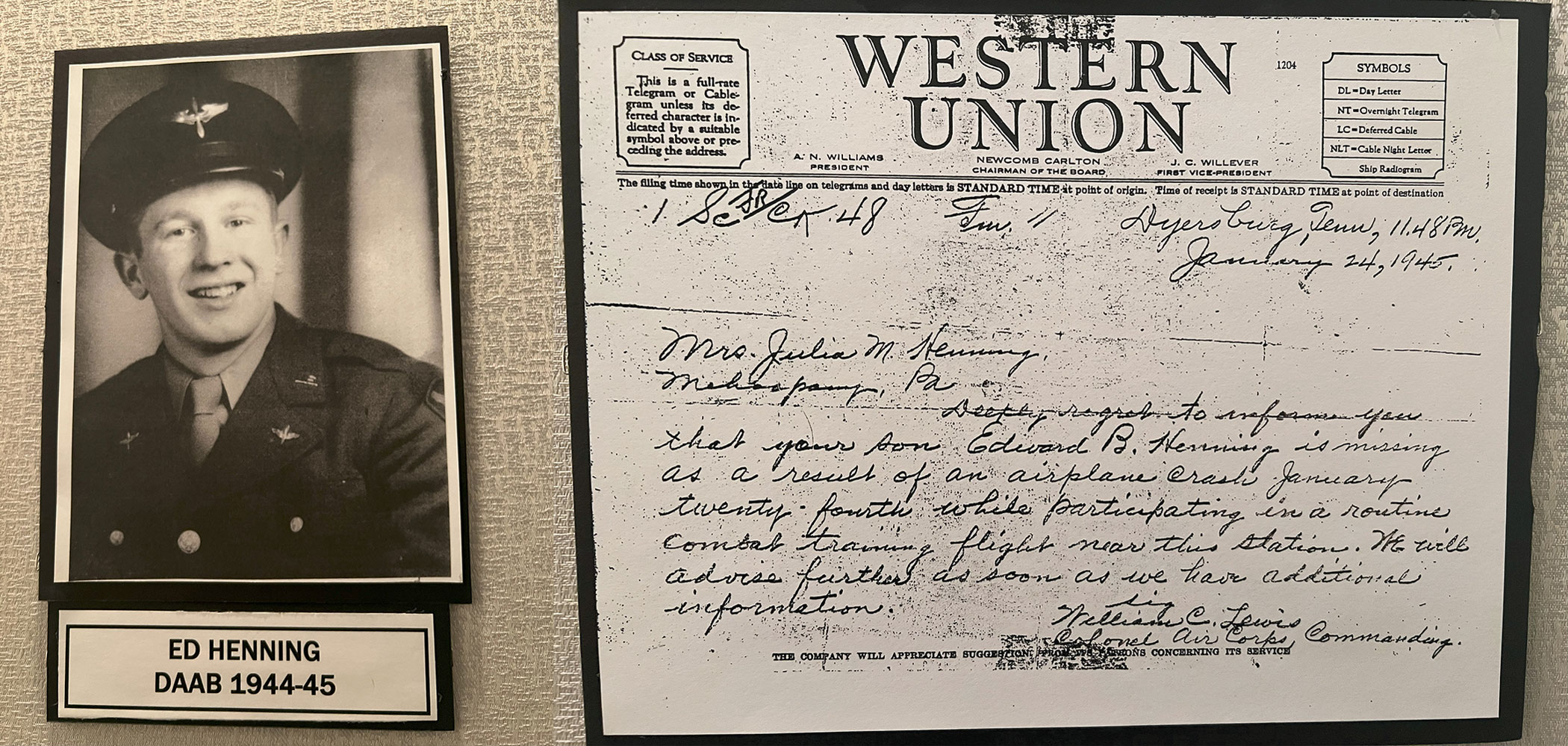Memorial ceremony to honor those who died training on the B-17 bomber
Scarlet fever saved the life of Tail Gunner Ed Henning when his entire flight crew died January 24, 1945, in a crash while training at the Dyersburg Amy Air Base, just outside of Halls.
His family and friends, however, didn’t know he was alive; his mother even received a telegram about the crash and his probable death. It wasn’t until the next day that the base command realized Henning had been sent to the hospital the day of the crash and then sent his mother another telegram with the good news.
Henning’s10 crewmates were among the 115 airmen who died in training mishaps at the airbase as they learned how to fly the B-17 — the Army’s effective bomber during World War II.
Those crewman and other fallen veterans will be honored at a special ceremony May 22 at the Veterans Museum for Memorial Day. “By laying a wreath in front of the monument, we express our profound appreciation for all who have given their lives for our country,” said Hillary Wheeler, the museum’s Administrative Assistant.
Built in 1942 and dismantled in 1945, the Dyersburg Army Airbase was the largest combat air training school in World War II. It was the airmen’s last stop before heading to Europe. The B-17 dropped more bombs than any other aircraft in WWII.
The base was busy, with 100 training take offs and landings per day. It created jobs for the entire region. The airbase had a 188-bed hospital, a movie theater that seated 600 and an Olympic-sized swimming pool.
The Veterans Museum, situated at the former base and its runways, highlights the base’s history and gives tribute to other veterans. It is open 10 a.m. to 4 p.m. Monday to Friday and 2-5 p.m. Saturday and Sunday. Museum tickets are $5 for adults and $2 for veterans and children under 12. For more information, visit dyaab.us.

Above at left: A monument dedicated to the 115 crewmen who were killed in air crashes while stationed at Dyersburg Army Air Base is at the Veterans’ Museum. The monument was sponsored by Sterling Forsythe, who used to live in Ripley.
Above at right: A diorama, sponsored by Warren Nunn of Halls, depicts the former air base with buildings, layouts and the three runways. The diorama locates the base in relationship to today’s highways. In 1942, the four-lane U.S. 51 did not exist.
Below: Ed Henning and the Western Union his mother received.

